Today we are taking a look at the Samsung 980 1TB SSD. This drive is pitched as a successor to the 970 EVO line of drives and is a PCIe 3.0 SSD, unlike the 980 Pro which is PCIe 4.0. Samsung’s 980 is essentially their entry-level NVMe SSD, with a number of major departures from the 970 EVO line, chief among which is the lack of a DRAM cache.
Samsung 980 1TB NVMe SSD
The Samsung 980 1TB comes in a single-sided M.2 2280 (80mm) form factor.
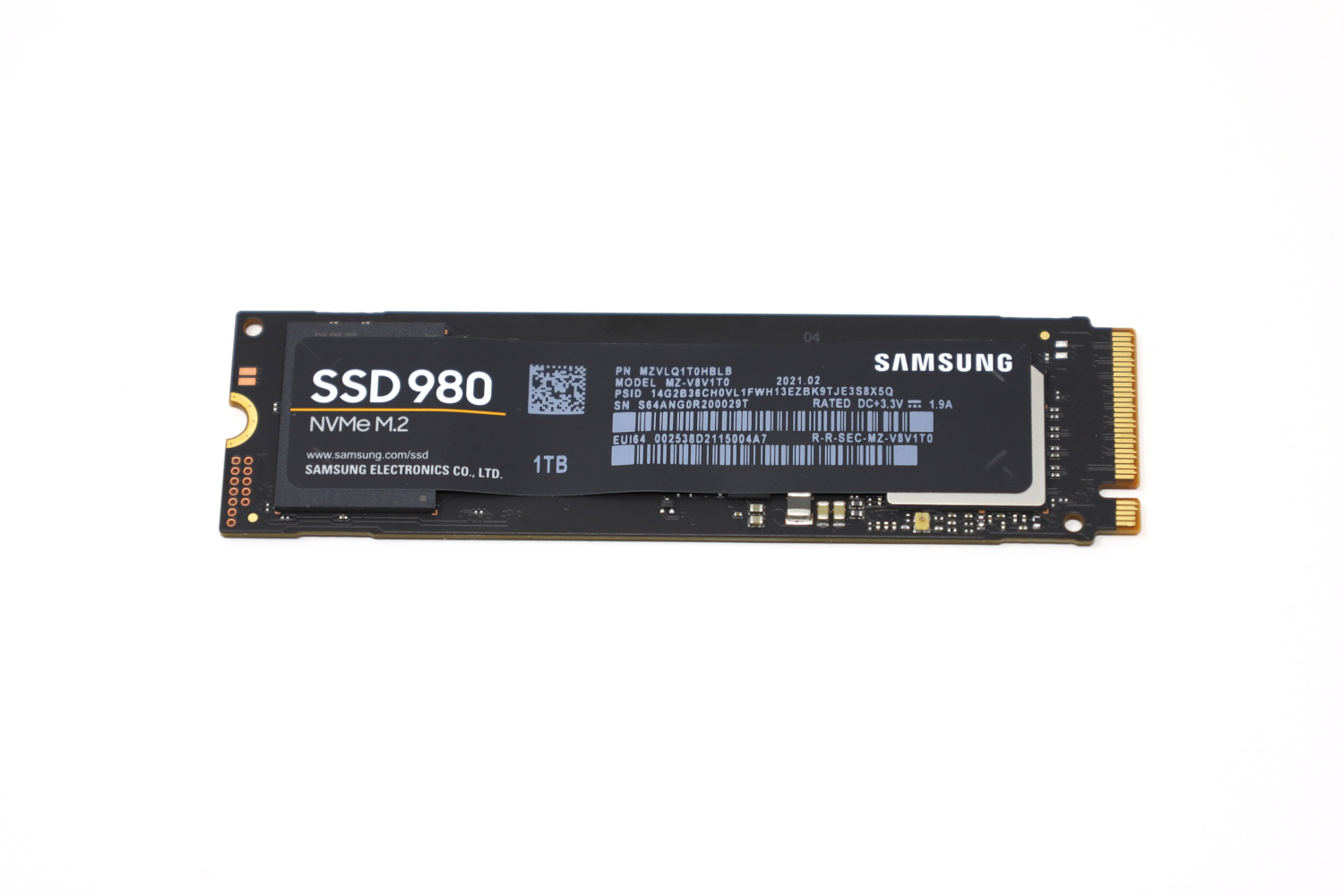
Beneath the product label is Samsung’s 4-channel Pablo controller, a single NAND package, and not much else. This design is very reminiscent of the WD Blue SN550 1TB, with the single NAND package and physical separation between the NAND and the controller.
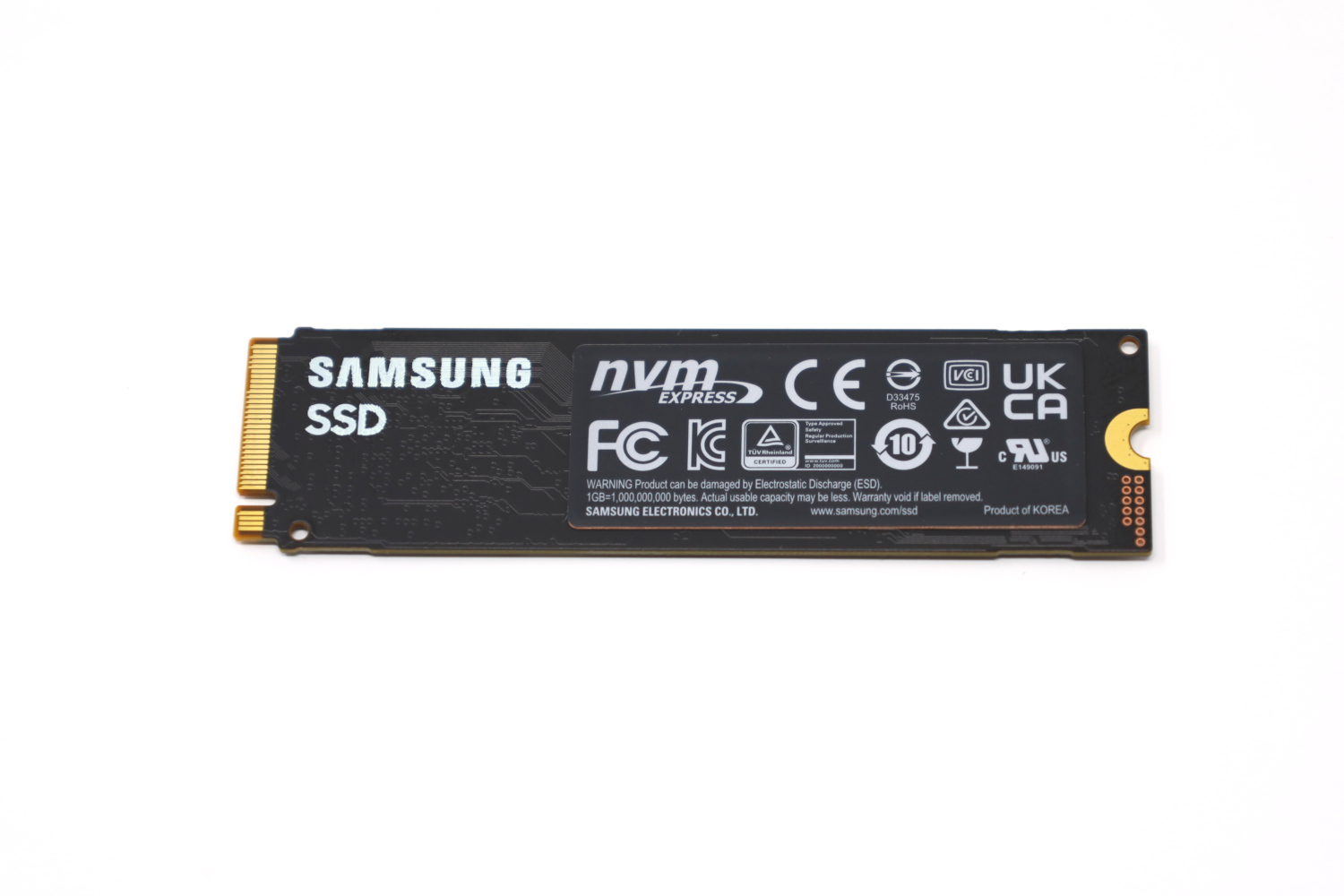
Since this is a single-sided drive, the back has nothing but a product label. Samsung claims this label is a heat spreader, and indeed it appears to be a thin copper strip. However, its function as a heat spreader seems to mostly be marketing since it is both on the wrong side of the drive and also physically distant from the controller.
Samsung 980 Specs
The Samsung 980 line of SSDs is available from 250GB to 1TB.
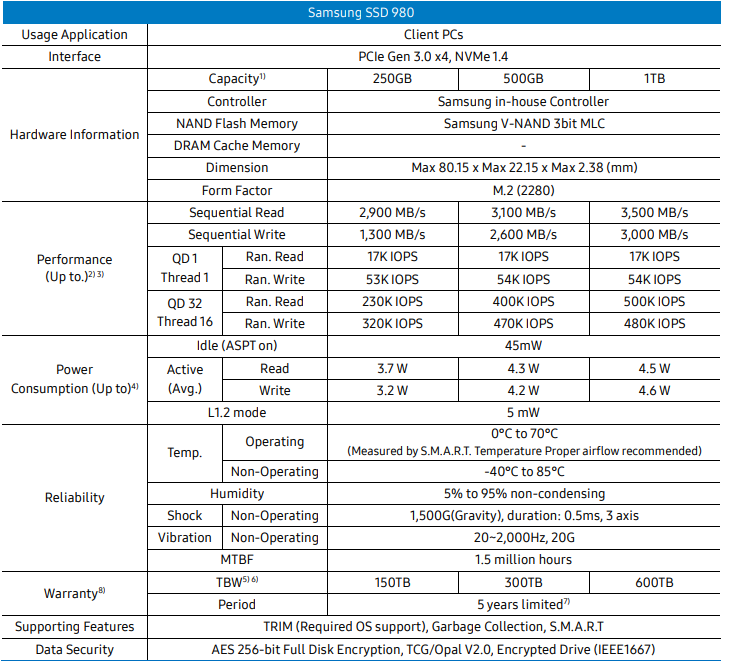
The 1TB drive we are looking at is at the top of the product stack, and clocks in at 3500MB/s read and 3000MB/s write per the spec sheet. The Samsung 980 1TB drive employing Host Memory Buffer (HMB) to offset the lack of on-drive cache. 3500MB/s is a bold claim on the PCIe 3.0 interface, so we will have to see how it holds up.
In addition, once again Samsung has decided to refer to TLC as “3bit MLC” the same as they did on their 980 Pro drive. While the M in MLC does stand for “multi” and thus is not strictly defined to refer to only 2 bits per cell, all pre-existing industry norms would expect 3 bits per cell NAND to be referred to as TLC. Just as before, I feel that the “3bit MLC” descriptor is at best confusing.
Finally, we have endurance, which for the 1TB drive is rated at 600TBW or 0.3 DWPD. These endurance figures match the previous generation 970 EVO Plus drives, and will generally be sufficient for most desktop workloads.
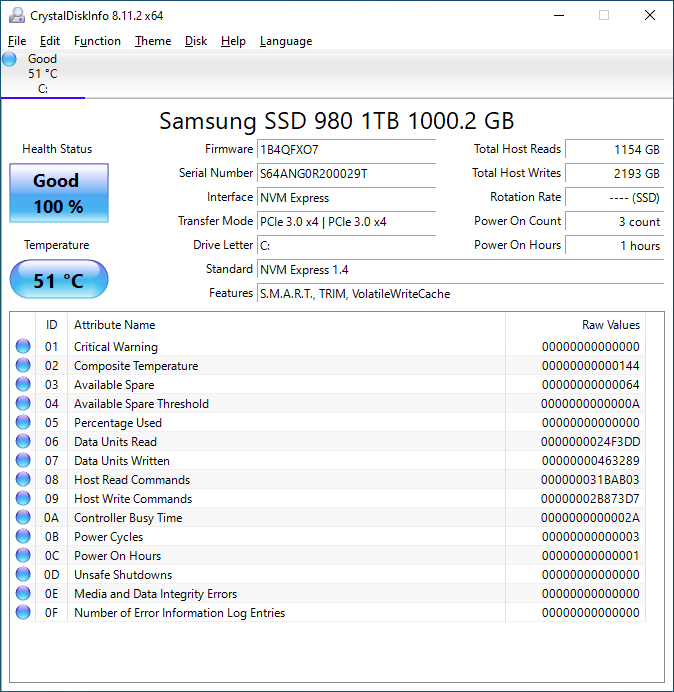
CrystalDiskInfo can give us some basic information about the SSD, and confirms we are operating at PCIe 3.0 x4 speeds using NVMe 1.4.
Test System Configuration
We are using the following configuration for this test:
- Motherboard: ASUS PRIME X570-P
- CPU: AMD Ryzen 9 3900X (12C/24T)
- RAM: 2x 16GB DDR4-3200 UDIMMs
Our testing uses the Samsung 980 1TB as the boot drive for the system, installed in the M.2_1 slot on the motherboard. The drive is filled to 85% capacity with data and then some is deleted, leaving around 60% used space on the volume.
Next, we are going to get into our performance testing.

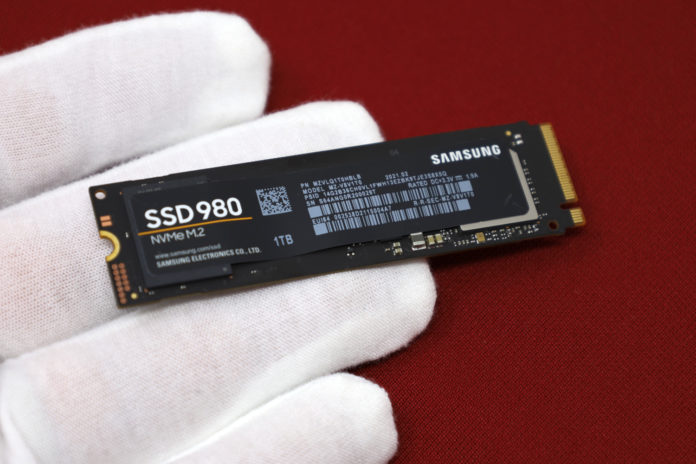



Will, nice writeup as usual. I enjoy seeing the usual suspect benchmarks I’ve been using for a while. I enjoy the range of storage options presented here at STH. For CrystalDiskInfo, is there a benefit to keeping the default hex values on the drive info screenshot? I realize most of the pertinent info is at the top of the screen, for a new drive especially, but if you’re going to show the full screen, how about using the decimal view for the lower portion? From memory it’s Settings > Advanced Features > Raw Values > 10 DEC, or somewhere in that vicinity. At least for me, decimal is WAY easier to interpret the values there, such as host writes versus NAND writes, max drive temperatures, accrued errors and ECC events, etc.
MOSFET,
Not in particular. I have even had the suggestion to change it before, I’m just a bit forgetful and it isn’t necessarily information I’m looking to see. I’ll try to remember in the future!
Nice write up, I was really enjoying reading it, BUT…
WTF!? You’re comparing apples to oranges here! The 980 looked like it may be a solid performer depending on price, but then I realized you’re comparing a:
1TB 980 vs 500GB SN750 vs 250GB 970 EVO Plus!
If I have to explain WHY this is a problem, then you shouldn’t be posting or reading reviews. A 1TB 970 EVO Plus would probably crush this drive in benchmarks!
Nice write up, I was really enjoying reading it, BUT…
WTF!? You’re comparing apples to oranges here! The 980 looked like it may be a solid performer depending on price, but then I realized you’re comparing a:
1TB 980 vs 500GB SN750 vs 250GB 970 EVO Plus!
If I have to explain WHY this is a problem, then you shouldn’t be posting or reading reviews. A 1TB 970 EVO Plus would probably crush this drive in benchmarks!
Jmcgrath, if you’re too lazy to explain in the first place then you shouldn’t be popping out of your trashcan.
Nice review Will, it actually doesn’t seem a bad drive despite being dramless and a worthy option. It feels like the controllers are getting good enough and the backing nand is also getting good enough to “get away” with not having dram.
JMcGrath,
I can only use comparison points for drives that I’ve benchmarked, and unfortunately I haven’t personally benchmarked a 1TB SN750 or 1TB 970 EVO Plus, which in the 970’s case is something I point out in the comparisons segment of the review. When comparing directly to the only 970 EVO Plus I have benchmarked I literally state “Unfortunately the 970 EVO Plus 250GB is operating at a handicap; the smaller amount of NAND directly translates to fewer populated channels on the 970 EVO Plus’s controller, and had the benchmark been apples to apples with 1TB drives it is entirely possible the 970 EVO Plus could have an even stronger showing. Even when comparing against the baby 970 EVO Plus drive, the 980 1TB cannot claim a clean victory.” As for the SN750, I do not go out of my way to draw comparisons to that drive at any point in the review. I think a more apt comparison point would have been the SK hynix Gold P31 1TB, which is an equivalently priced drive and whose results are included on every benchmark graph.
I’m interested to see if this will be whitelisted for the PS5.
No, it should be a part of benchmarking to test the sustained write for non-MLC SSDs. And I didn’t get, at what point exactly does it drop to raw TLC write speeds? How many gigs is the cache size there?
slc,
“How many gigs is the cache size” is nearly an irrelevant question, since almost all modern drives use an at least partially dynamic cache system, and the amount of available cache will depend on how full the drive is at any given moment in time. This is why I am now measuring and reporting the post-cache write speed, so that readers have knowledge of ‘worst case scenario’ write speed.
I don’t see the point even if you are on pci e why not just get the pro model so you have dram on the nvme and you don’t hit yourself on the life of the drive.
I appreciate the review. BUT, no matter how much you mention in the text, many will only look at the graphs. It’s fine to present “all the drives I’ve tested” as a reference chart, but of more value to purchasers I think would be a chart comparing “only 1TB drives”. IMO far more consumers shop for a particular size than a benchmark number, and that benchmark number really only means something when comparing the various price points for a given capacity.
Useful as ZIL SLOG device? No RAM implies no lost data on power failure?